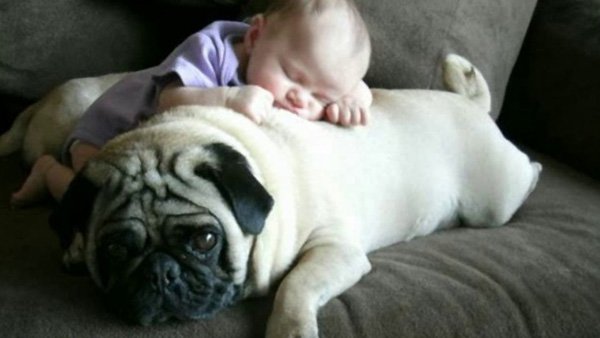
Today抯 veterinary healthcare providers face a dilemma: how to get your clients to provide more and better care for their pets without making them think all you want is money. Here are some ways you can do just that (and a bonus: you抣l get more new clients, too!).
America is a nation of animal lovers. We provide homes for pets in numbers unrivaled by any other society on earth. And you, the veterinary healthcare provider, who have devoted your life to the well-being of animals, do what you do for the love of animals梟ot for the love of money.
Yet, as you know from your daily practice, many梚f not most梡ets are undertreated.
Maybe you抮e reluctant to recommend additional treatment, for fear your clients will think you just want their money. The truth is, pet owners would spend more on pet care?if their vets told them what they needed to do卆nd if you could convince them that it抯 their pets?well-being you care about most.
The key? Vets who establish the best relationships with their clients will get the most business from existing clients卆nd the most new clients. And those relationships begin with communication.
The human-animal bond is extremely important in our society.
Most households in America have at least one pet, and these pets are cherished members of the family.
Consider these figures from the AAHA抯 2004 Pet Owner Survey of US and Canadian pet owners:
94% think their pet has humanlike personality traits.
93 % would risk their own life for their pet.
87% include pets in their holiday celebrations.
84% consider themselves Mom or Dad to the pet.
82% think of their pets at least once a day when they抮e away.
80% said 揷ompanionship?is the major reason for having a pet.
78% greet their pet at the door before they greet their spouse.
72% say affection is their pet抯 most endearing trait.
67% of pet-containing households recognize pet birthdays.
65% have sung or danced with their pet.
62% sign letters or cards as being from their pets as well as themselves.
57% would rather have a pet than a person with them if stranded on a deserted island.
55% have an emergency preparedness plan that includes their pet.
43% of pets (not including fish and snakes) share beds with their people.
36% say their pet enjoys watching TV.
33% talk to their pets on the phone or through the answering machine.
25% say they brush their pet抯 teeth.
24% of dog owners sometimes dress their pets.
18% have attended a birthday party for someone else抯 pet.
Not only that厀e are increasingly becoming a culture of animal lovers. American pets enjoy a better quality of life each year. Consider that:
Spaying and neutering have reached an all-time high?2%, up from 75% just ten years ago.
Those who provide daily exercise for their pet is now at 80%, up from only 68% in 1995.
Dogs and cats have largely moved indoors, and 39% of pet owners say they have at least one piece of furniture reserved for their pet.
Those who dress their pets is up from 21%, with most saying they do so to protect their pets from the weather卋ut also 揻or fun?on holidays.
The concept of 搉o-kill?shelters梠nly recently considered unrealistic梚s quickly gaining in popularity.
Yes厀e love to love our pets.
But厃ou don抰 want to take advantage of our love for our pets!
Understandably, with each care recommendation you make comes the implication that the client must spend money.
Emphasize that prevention is the best way to go. Remind pet owners they can help pets live longer, healthier, happier lives by bringing in their pets for regular physical exams, vaccinations, and dental care.
Some pet owners might consider euthanizing a pet because they抮e not aware of the options available. You can put yourself on their team by suggesting ways they can save money梕.g., mail order drugs or generics; home care.
Don抰 pre-judge clients?willingness to comply卭r ability to pay. Some hints?
Start by assuming that pet owners want the best care for their pets.
Keep educational materials and resources available; use them to reinforce recommendations you抳e made.
Schedule the next appointment before the client leaves.
Here抯 a big opportunity to increase client satisfaction: make follow-up phone calls. Studies show that most pet owners want follow-up calls卋ut only a little over half get them!
Remember: these are quality of care goals, not financial goals.
Pets are big business! Pets are the new status symbols; a well cared-for pet is a sign of achievement.
Many vets believe obesity is the greatest health issue facing America抯 pets. Do you? Here抯 a worthy challenge to overcome: people buy ordinary pet food because it抯 cheaper卆nd it抯 揼ood enough.?
Offer premium quality pet foods for sale at your practice, and suggest clients buy some along with the services they抮e purchasing.
Here again, emphasize that prevention is the key.
Other trends represent increased opportunity?
We have more pets per household then ever before. Consider these exciting trends:
Pets are living longer than ever before. This is a self-perpetuating cycle: pets receive better care卼herefore live longer卆nd older pets require specialized care.
People are more likely than they used to be to adopt older pets卼herefore animal shelters and rescue organizations are more likely to keep these pets available for adoption rather than euthanize them.
No-kill shelters are also likely to keep available for adoption pets with other special needs卆nd people are more willing to adopt these than ever before.
The final frontier of opportunity: cats. A growing percentage of pets in America are cats; there are now more cats than dogs in America. Yet, cats are less likely than dogs to get annual care.
And with Americans having busier lifestyles, with fewer (human) children in the family and most people away during the day, this is a trend with no end in sight.
匴hich represents an opportunity to put more emphasis on regular cat care.
Bottom line: connect with owner, who connects with the pet.
Your job is to help the owner keep the pet healthy and happy. Encourage the understanding that it抯 good to establish the relationship before something catastrophic happens.
This will keep your clients bringing their pets to you for regular, preventive care.
It will also establish your reputation as being a vet who cares卆nd by word-of-mouth advertising from healthy patients and happy clients, your business will grow.
Here are some of the ways you can keep in touch with your clients:
Brochures
Case studies
E-mail campaigns
Instruction manuals
News releases
Newsletters (internal and external)
Sales letters
Trade magazine articles
Web content
White papers
匨ore
 Pet Rescue - A New Home For Addy
I have just read an article about a dog in Saginaw. It
Pet Rescue - A New Home For Addy
I have just read an article about a dog in Saginaw. It
 Keeping An Axolotl As A Pet
Keeping An Axolot
Keeping An Axolotl As A Pet
Keeping An Axolot
 Tips forMaking Your Pet Dog Feel Happy and Healthy
Tips forMaking Your Pet Dog Feel Happy and Healthy
Tips forMaking Your Pet Dog Feel Happy and Healthy
Tips forMaking Your Pet Dog Feel Happy and Healthy
 Marketing Your Pet Services at the Next Pet Show
A trade show prize wheel can be a powerful marketing tool in
Marketing Your Pet Services at the Next Pet Show
A trade show prize wheel can be a powerful marketing tool in
 Enhance the Productivity of your Yield with Chicken Coops from Eggshell
Enhance the Productivity of your Yield with Chicken Coops
Enhance the Productivity of your Yield with Chicken Coops from Eggshell
Enhance the Productivity of your Yield with Chicken Coops
Copyright © 2005-2016 Pet Information All Rights Reserved
Contact us: www162date@outlook.com